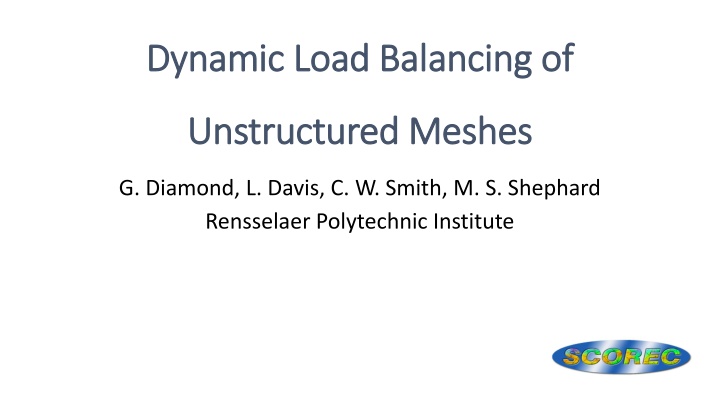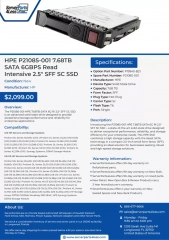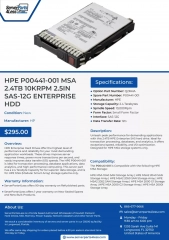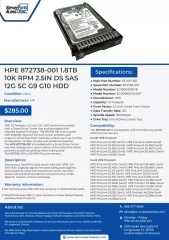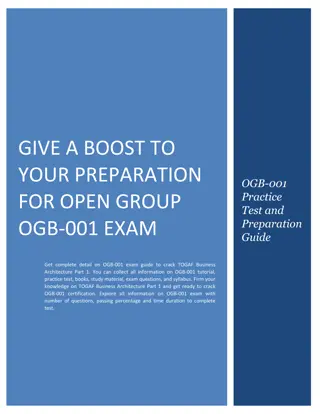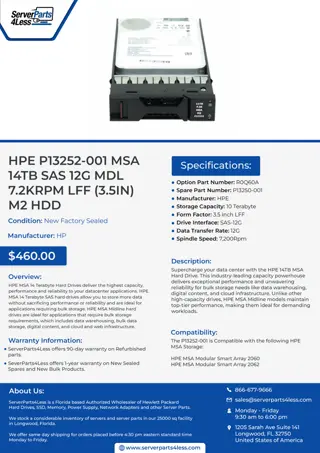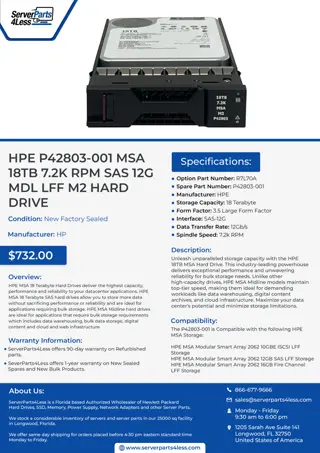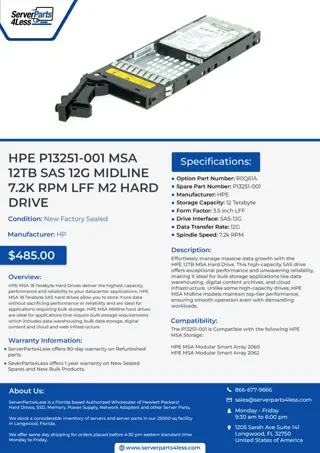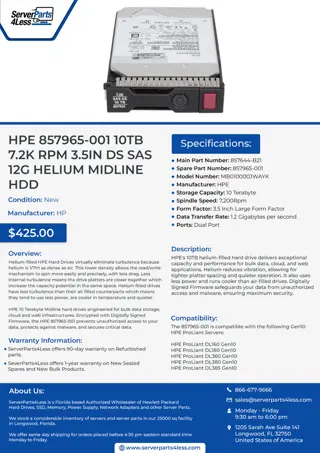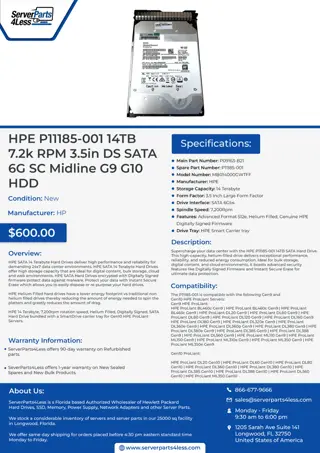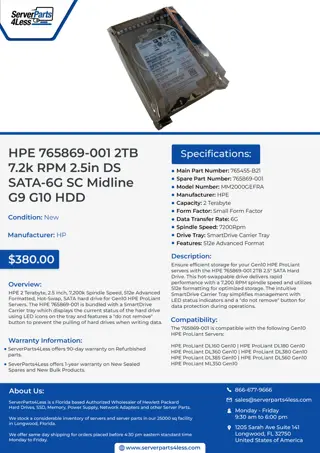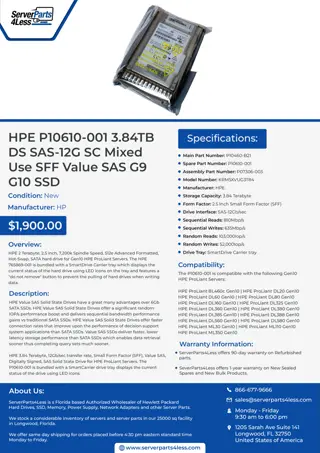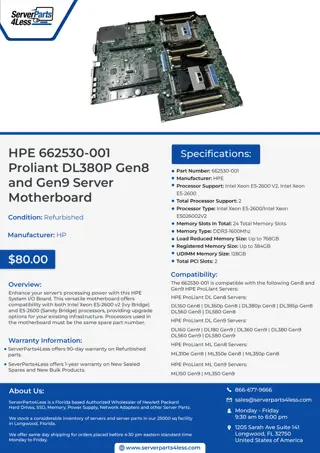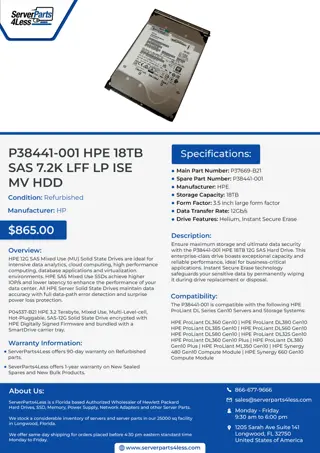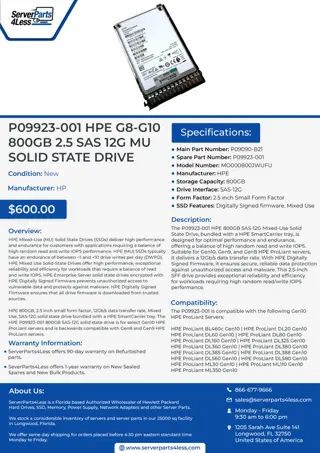COMP 110-001 Mid-Term Review and Computer Fundamentals
In this set of images, you will explore essential topics for your COMP 110-001 Mid-Term, such as Hardware vs. Software, Memory, Programming Languages, Algorithms and Pseudocode, Variables, and How to Use Variables. Understand concepts like CPU, Memory, High-level vs. Low-level languages, Algorithms, Variable declaration, assignment, and value change. Prepare effectively for the upcoming exam and deepen your understanding of fundamental computer science concepts.
Download Presentation

Please find below an Image/Link to download the presentation.
The content on the website is provided AS IS for your information and personal use only. It may not be sold, licensed, or shared on other websites without obtaining consent from the author.If you encounter any issues during the download, it is possible that the publisher has removed the file from their server.
You are allowed to download the files provided on this website for personal or commercial use, subject to the condition that they are used lawfully. All files are the property of their respective owners.
The content on the website is provided AS IS for your information and personal use only. It may not be sold, licensed, or shared on other websites without obtaining consent from the author.
E N D
Presentation Transcript
Dynamic Load Balancing of Dynamic Load Balancing of Unstructured Meshes Unstructured Meshes G. Diamond, L. Davis, C. W. Smith, M. S. Shephard Rensselaer Polytechnic Institute
Outline Outline EnGPar Diffusive Load Balancing Load Balancing Unstructured Meshes Initial Accelerating of Diffusion Plasma Physics/PIC
Dynamic Load Balancing Dynamic Load Balancing Adaptive mesh applications require Fast redistribution of load throughout simulation Simultaneous balancing of multiple mesh entity dimensions Multilevel graph methods are too memory intensive for large process counts Diffusive methods are fast and allow incremental improvement.
EnGPar EnGPar Our tool for fast partition improvement accounting for multiple criteria. Uses multi-hypergraph, N-graph, to represent user data allowing multiple types of relational connections. Vertices: Uniquely owned, represent the main source of data. Hyperedges: Relational connections between sets of vertices. Different sets of hyperedges represent different types of relations. Mulitcriteria load balancing is performed on the N-graph using local diffusive methods.
Partitioning Meshes Partitioning Meshes Unstructured meshes are typically partitioned by elements or vertices Vertices in the N-graph represent the unique mesh dimension. Hyperedges are constructed for other mesh dimensions of computational importance. Computation costs proportional to the weighted balance of mesh entities. Communication costs proportional to the mesh entities on boundary. Equivalent to the edge cut in the N-graph Conversion from element-partitioned mesh (a) to N-graph (b) and (c)
Element Element- -Partitioned Partitioned Tests run on one billion element mesh up to 512Ki (512 * 2^10) parts Partitions created by using ParMETIS globally up to 8Ki parts followed by locally up to 512Ki. Goal is to balance mesh vertices and mesh elements. Mesh vertex imbalances is reduced from 13% to 5% for 128Ki, 18% to 5% for 256Ki, and 53% to 6% for 512Ki. Edge cut is increased by 1%. EnGPar balances the 512Ki mesh in 4% of the time to create the partition from 8Ki parts.
Vertex Vertex- -Partitioned Partitioned Initial tests of EnGPar on a vertex-partitioned mixed mesh resulted in significant increases in edge cut as the mesh entities were balanced. At 8Ki parts, a reduction in 7 percent point decrease in imbalance resulted in a 15% increase in edge cut. To avoid large increases in edge cut, additional logic and a tunable parameter was added to reject migrating cavities (hyperedge and neighboring vertices) that would increase the edge cut significantly. For each cavity we compute the ratio of intra-part pins to inter-part pins. If the ratio is greater than the tunable parameter the cavity will not be migrated. Three hyperedges on part boundary (A,B,C). Ratio for cavity of A = 5/3, B = 3/4 , C = 1/2. B and C are good candidates for migration.
Vertex Vertex- -Partitioned Partitioned Tests done on 60 million mixed element mesh up to 8Ki parts created by ParMETIS. Vertex imbalance is restricted to be below 5% Without the edge cut limits, a 7 percent point decrease in imbalance comes with a 15% increase in edge cut Using the edge cut limiter at 1.2 results in a 5 percent point decrease in imbalance without increasing the edge cut. At 2.0 imbalance is reduced by 6 percent points with a 4% increase in edge cut.
Accelerating Selection Topological distance from the part center determines order of boundary traversal. Outside-in (left) then inside-out (right) breadth first traversals Use Sell-C-Sigma for memory coalescing. Distance computation Exploit uniform downward adjacencies (elms to verts) to unroll loops. Sell-C-Sigma data structure (Besta and Merending, et al.)
OpenCL BFS Kernels Kernel comparison on NVIDIA 1080ti; Average of three runs shown. scg_int_unroll is 4.78 times faster than csr on 28M graph and up to 11 times faster than serial on Intel Xeon (not shown) csr - OpenCL parallel pull style vtx hyperedge using CSR scg - OpenCL parallel pull style vtx hyperedge using Sell-C-Sigma *_int - use 4B int for adjacency and degree lists instead of 8B long *_unroll - unroll the loop over hyperedges adjacent to a vertex
Cavity Cavity Selection Selection Cavity a hyperedge on the part boundary and its adjacent vertices Need to operate on non-overlapping cavities Kokkos Kernels Coloring Coloring requires CSR of graph dual hyperedges-to-hyperedges via vertices Kokkos unordered_map enables efficient construction (memory and time) Ongoing work: parallel sort of selected cavities in order of distance
Plasma Simulation/Particle in Cell Plasma Simulation/Particle in Cell PIC parts contain a core region and buffer elements. Particles must remain in safe region(core + portion of buffer). Instead of tracking each particle, track where particles can be with overlapping safe zones. N-graph consists of subgraphs for overlapping safe zones. Weight of vertices is set to the number of particles in overlapping safe zones. Diffusively migrate weight(# of particles) until total weight is balanced. Initial tests have reduced a 42% imbalance of particles to 18%. + = A PICpart core minimum safe zone Buffer elements added A PICpart Overlapping safe zones between parts A,B,C, and D near the A-B boundary
Closing Remarks Closing Remarks EnGPar performs multicriteria diffusive load balancing methods on multi-hypergraphs. General design supports element-partitioned, vertex-partitioned meshes, particles in an unstructured mesh for PIC, etc. Pipelined FPGA kernel implementations Fine grain tuning (unrolling, different data formats) can improve performance greatly.
Thank You Questions? Acknowledgements: NSF SI2-SSE: Fast Dynamic Load Balancing Tools for Extreme Scale Systems DOE FASTMath SCIDAC Institute CEED ECP Argonne National Laboratory - Kazutomo Yoshii
